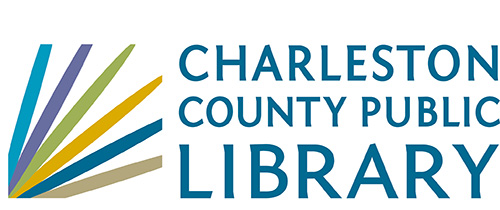Menu
×
West Ashley Library
9 a.m. - 7 p.m.
Phone: (843) 766-6635
Folly Beach Library
Closed
Phone: (843) 588-2001
Edgar Allan Poe/Sullivan's Island Library
Closed for renovations
Phone: (843) 883-3914
Wando Mount Pleasant Library
9 a.m. - 8 p.m.
Phone: (843) 805-6888
Village Library
9 a.m. - 1 p.m.
Phone: (843) 884-9741
St. Paul's/Hollywood Library
9 a.m. - 8 p.m.
Phone: (843) 889-3300
Otranto Road Library
9 a.m. - 8 p.m.
Phone: (843) 572-4094
Mt. Pleasant Library
9 a.m. - 8 p.m.
Phone: (843) 849-6161
McClellanville Library
9 a.m. - 6 p.m.
Phone: (843) 887-3699
Keith Summey North Charleston Library
9 a.m. - 8 p.m.
Phone: (843) 744-2489
John's Island Library
9 a.m. - 8 p.m.
Phone: (843) 559-1945
Hurd/St. Andrews Library
9 a.m. - 8 p.m.
Phone: (843) 766-2546
Miss Jane's Building (Edisto Library Temporary Location)
2 p.m. – 6 p.m.
Phone: (843) 869-2355
Dorchester Road Library
9 a.m. - 8 p.m.
Phone: (843) 552-6466
John L. Dart Library
9 a.m. - 7 p.m.
Phone: (843) 722-7550
Baxter-Patrick James Island
9 a.m. - 8 p.m.
Phone: (843) 795-6679
Main Library
9 a.m. - 8 p.m.
Phone: (843) 805-6930
Bees Ferry West Ashley Library
9 a.m. - 8 p.m.
Phone: (843) 805-6892
Mobile Library
9 a.m. - 5 p.m.
Phone: (843) 805-6909
Today's Hours
West Ashley Library
9 a.m. - 7 p.m.
Phone: (843) 766-6635
Folly Beach Library
Closed
Phone: (843) 588-2001
Edgar Allan Poe/Sullivan's Island Library
Closed for renovations
Phone: (843) 883-3914
Wando Mount Pleasant Library
9 a.m. - 8 p.m.
Phone: (843) 805-6888
Village Library
9 a.m. - 1 p.m.
Phone: (843) 884-9741
St. Paul's/Hollywood Library
9 a.m. - 8 p.m.
Phone: (843) 889-3300
Otranto Road Library
9 a.m. - 8 p.m.
Phone: (843) 572-4094
Mt. Pleasant Library
9 a.m. - 8 p.m.
Phone: (843) 849-6161
McClellanville Library
9 a.m. - 6 p.m.
Phone: (843) 887-3699
Keith Summey North Charleston Library
9 a.m. - 8 p.m.
Phone: (843) 744-2489
John's Island Library
9 a.m. - 8 p.m.
Phone: (843) 559-1945
Hurd/St. Andrews Library
9 a.m. - 8 p.m.
Phone: (843) 766-2546
Miss Jane's Building (Edisto Library Temporary Location)
2 p.m. – 6 p.m.
Phone: (843) 869-2355
Dorchester Road Library
9 a.m. - 8 p.m.
Phone: (843) 552-6466
John L. Dart Library
9 a.m. - 7 p.m.
Phone: (843) 722-7550
Baxter-Patrick James Island
9 a.m. - 8 p.m.
Phone: (843) 795-6679
Main Library
9 a.m. - 8 p.m.
Phone: (843) 805-6930
Bees Ferry West Ashley Library
9 a.m. - 8 p.m.
Phone: (843) 805-6892
Mobile Library
9 a.m. - 5 p.m.
Phone: (843) 805-6909
Patron Login
menu
Item request has been placed!
×
Item request cannot be made.
×
 Processing Request
Processing Request
DOK1 and DOK2 regulate CD8 T cell signaling and memory formation without affecting tumor cell killing.
Item request has been placed!
×
Item request cannot be made.
×
 Processing Request
Processing Request
- Author(s): Laletin, Vladimir; Bernard, Pierre-Louis; Montersino, Camille; Yamanashi, Yuji; Olive, Daniel; Castellano, Rémy; Guittard, Geoffrey; Nunès, Jacques A.
- Source:
Scientific Reports; 7/2/2024, Vol. 14 Issue 1, p1-10, 10p- Subject Terms:
- Source:
- Additional Information
- Abstract: Targeting intracellular inhibiting proteins has been revealed to be a promising strategy to improve CD8+ T cell anti-tumor efficacy. Here, we are focusing on intracellular inhibiting proteins specific to TCR signaling: DOK1 and DOK2 expressed in T cells. We hypothesized that depletion of intracellular inhibition checkpoint DOK1 and DOK2 could improve CD8+ T-cell based cancer therapies. To evaluate the role of DOK1 and DOK2 depletion in physiology and effector function of CD8+ T lymphocytes and in cancer progression, we established a transgenic T cell receptor mouse model specific to melanoma antigen hgp100 (pmel-1 TCR Tg) in WT and Dok1/Dok2 DKO (double KO) mice. We showed that both DOK1 and DOK2 depletion in CD8+ T cells after an in vitro pre-stimulation induced a higher percentage of effector memory T cells as well as an up regulation of TCR signaling cascade- induced by CD3 mAbs, including the increased levels of pAKT and pERK, two major phosphoproteins involved in T cell functions. Interestingly, this improved TCR signaling was not observed in naïve CD8+ T cells. Despite this enhanced TCR signaling essentially shown upon stimulation via CD3 mAbs, pre-stimulated Dok1/Dok2 DKO CD8+ T cells did not show any increase in their activation or cytotoxic capacities against melanoma cell line expressing hgp100 in vitro. Altogether we demonstrate here a novel aspect of the negative regulation by DOK1 and DOK2 proteins in CD8+ T cells. Indeed, our results allow us to conclude that DOK1 and DOK2 have an inhibitory role following long term T cell stimulations. [ABSTRACT FROM AUTHOR]
- Abstract: Copyright of Scientific Reports is the property of Springer Nature and its content may not be copied or emailed to multiple sites or posted to a listserv without the copyright holder's express written permission. However, users may print, download, or email articles for individual use. This abstract may be abridged. No warranty is given about the accuracy of the copy. Users should refer to the original published version of the material for the full abstract. (Copyright applies to all Abstracts.)
- Abstract:
Contact CCPL
Copyright 2022 Charleston County Public Library Powered By EBSCO Stacks 3.3.0 [350.3] | Staff Login


No Comments.